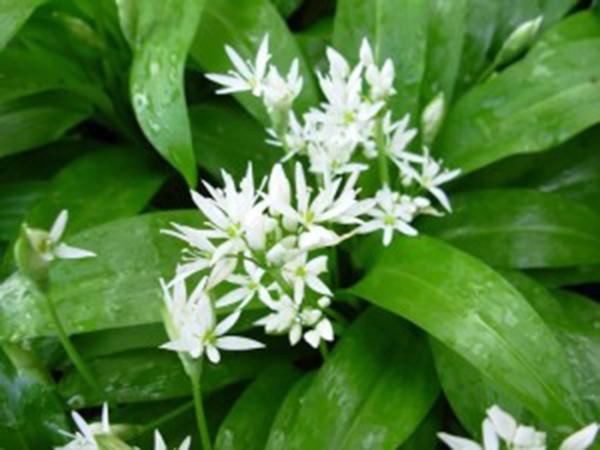We are well in to the British classics, led by the majestic Jersey Royals and the crowning glory of asparagus. Isle of Wight tomatoes, samphire and fresh peas are also unmissable in May.
English Asparagus
Although the season is very short, Sopley asparagus is well worth the wait for its unbeatable flavour and freshness. Asparagus can be lightly steamed or boiled to bring out the fragrant flavour, which can be enjoyed simply covered in butter or dipped in Hollandaise sauce.
Because asparagus is a naturally grown crop, growing in the notoriously fickle British climate, the time at which it makes its first appearance each year is always a subject for much speculation. Asparagus growers generally say that the season lasts from 24th April to 21st June – but don’t hold us to it!
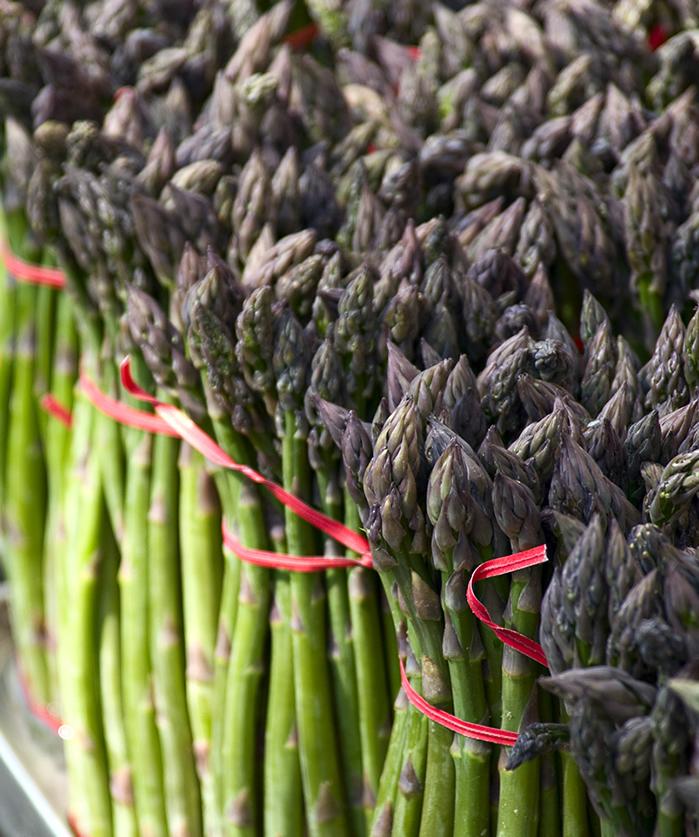
Jersey Royal
The Jersey soil is light and well drained and many farmers still use seaweed harvested from Jersey beaches as a natural fertilizer (it is known locally as Vraic). Jersey has some of the most formidable tidal flows in the world, and the strong movement of the sea deposits large quantities of vraic on the shore. The practice of using vraic on the land dates back to the 12th century.
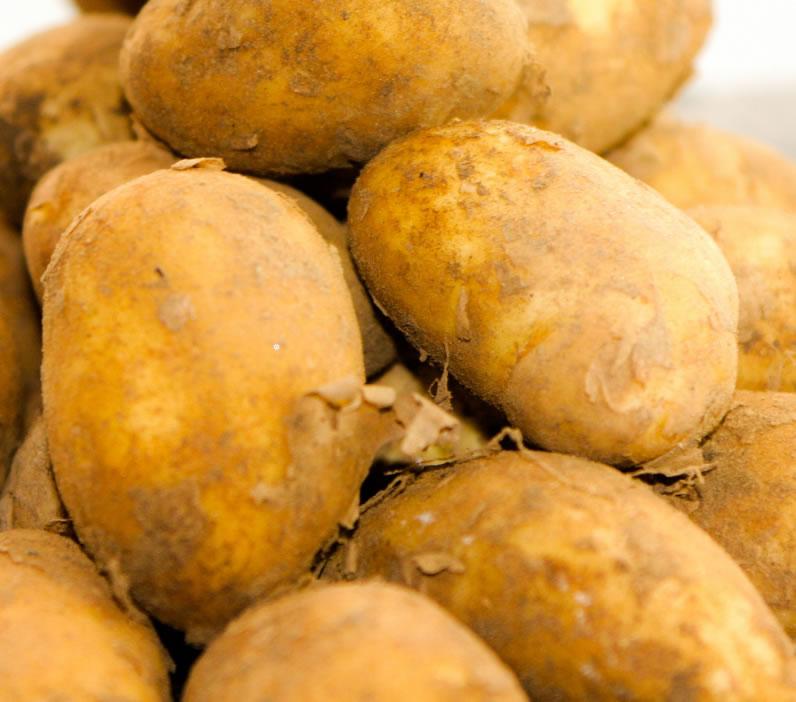
New Forest Strawberries
Although May sees the official start to the British berry season with milder temperatures, longer days and more sunshine –June continues to have the perfect conditions for enjoying British berries including strawberries. The best thing is that strawberries can be enjoyed when dining al fresco as part of a main course or dessert, straight from the punnet at a picnic, or just simply with cream or ice cream. Strawberries – a great accompaniment to summer!
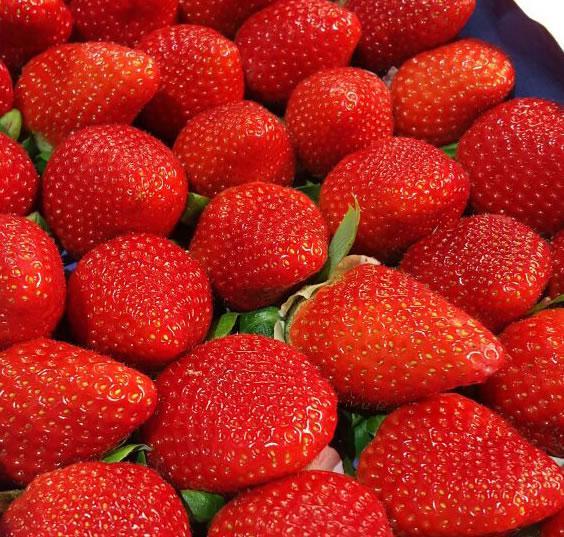
Peas
Really fresh peas will be crisp, bright green and smooth. Look for firm, bright green plump pods and avoid any that are discoloured or wrinkled. Available from mid-June to mid-August, peas lose their sweet taste and green colour quickly so they should always be eaten as fresh as possible.
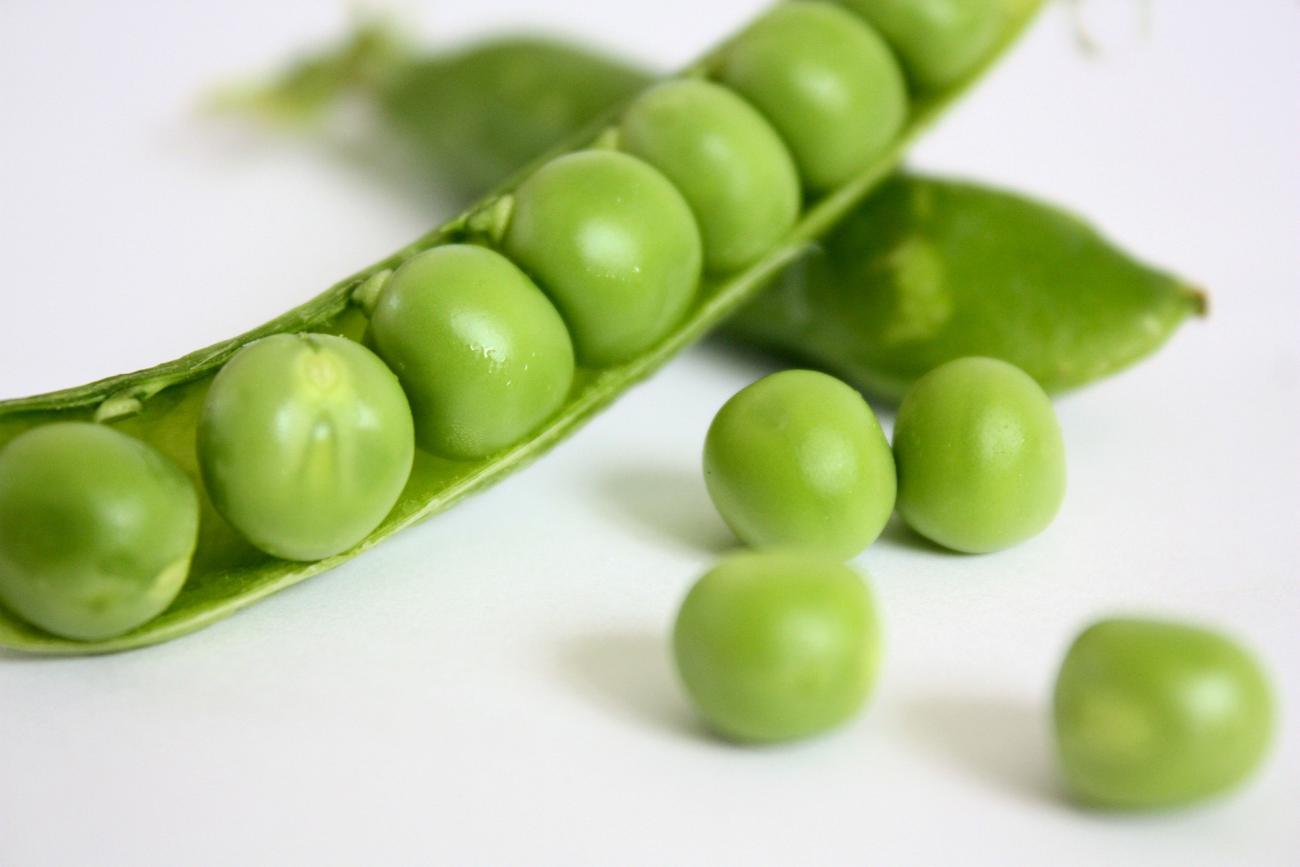
Radish
Radish, that common and beloved part of your salad, is a root crop, and it is pungent or sweet in taste with a lot of juice. Radishes can be white, red, purple or black, and in terms of shape, it can be long and cylindrical or round. They are eaten raw, cooked or pickled.
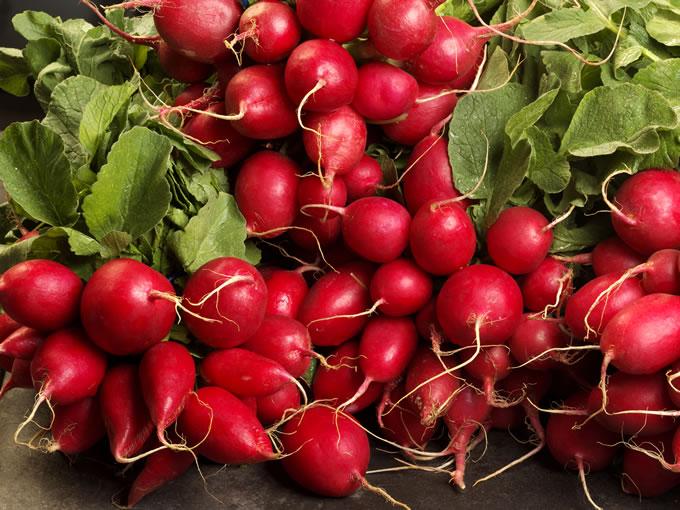
Rainbow Chard
The raw baby leaves of the coloured types look stunning in salads, and though they dull a little on cooking, a pile of young leaves, wilted and buttered with stems still attached, is still handsome on a plate. The adult plant gives you two vegetables in one: the crisp, robust stems and the abundant, delicately ruffled leaves. It’s a powerhouse of nutty, green-leaf flavour, so pair it with feisty partners: olives, cream, tomatoes, spices, strong cheese and smoked fish.
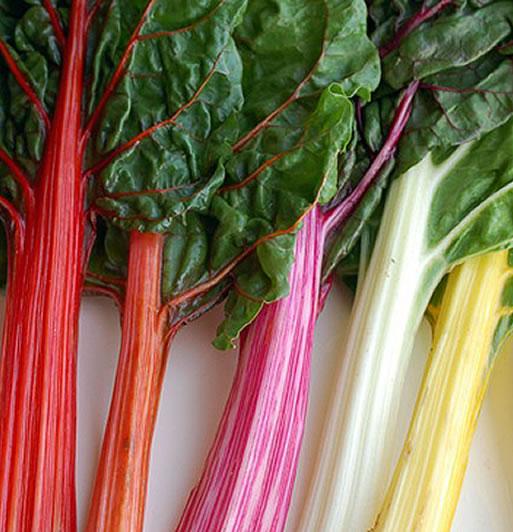
Red Watercress
Red watercress — although maroon is more like it — has even more peppery bite in its green-veined pointy leaves than regular watercress and, its growers say, more antioxidants. Use it raw in salads, because cooking turns the red to dark green. The watercress is grown on farms across Dorset and Hampshire and in Spain and Florida during the winter months.
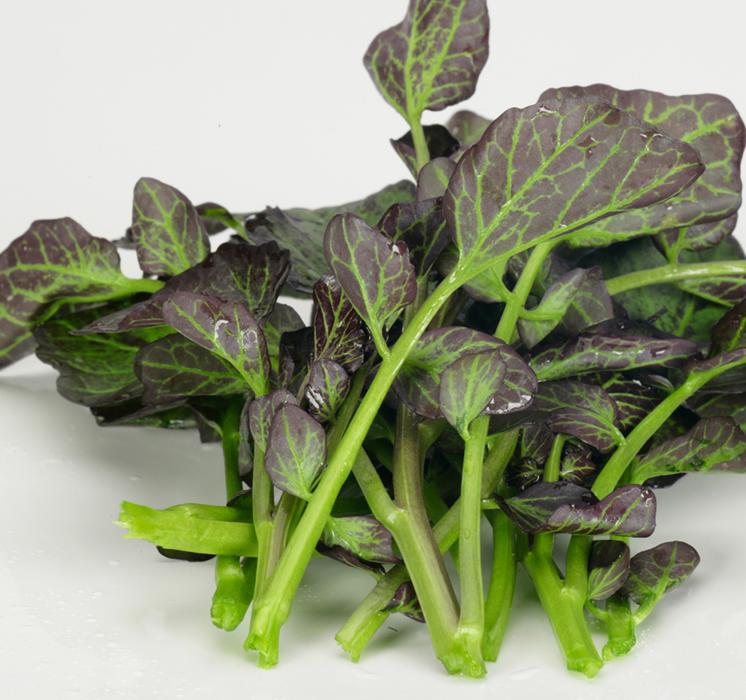
Rocket
This peppery leaf is also known as arugula. It’s a dark green salad vegetable, popular in Mediterranean countries. The leaves have a slightly bitter, peppery flavour and are gathered when they’re young. Rocket makes a delicious addition to salads but can also be used to make soups and to replace basil in pesto. A bed of rocket is a good base on which to serve grilled poultry or fish. Rocket leaves or popularly known as arugula or salad rocket is nutritious green-leafy vegetable. The young tender leaves carry a bitter peppery flavour that makes it mostly a salad vegetable. Rocket leaves have a sweet, nutty flavour when they’re young but start developing a strong spicy flavour as they mature
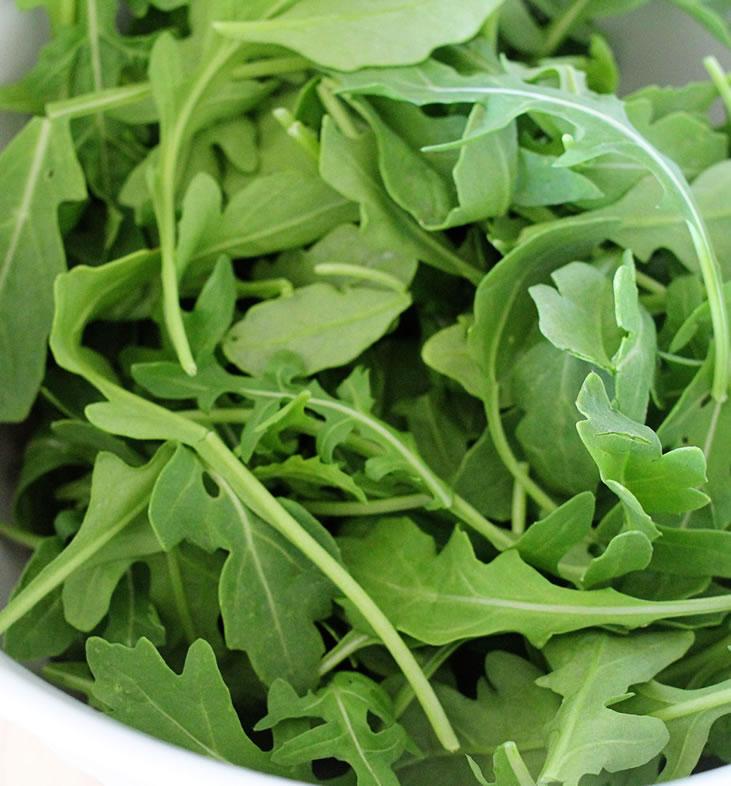
Samphire
Though there are two types of samphire – marsh and rock – only marsh samphire is widely available. Marsh samphire has vibrant green stalks, similar to baby asparagus, with a distinctively crisp and salty taste. It can be used raw in salad, though it tends to be very salty so it is more often boiled or steamed for a few minutes.
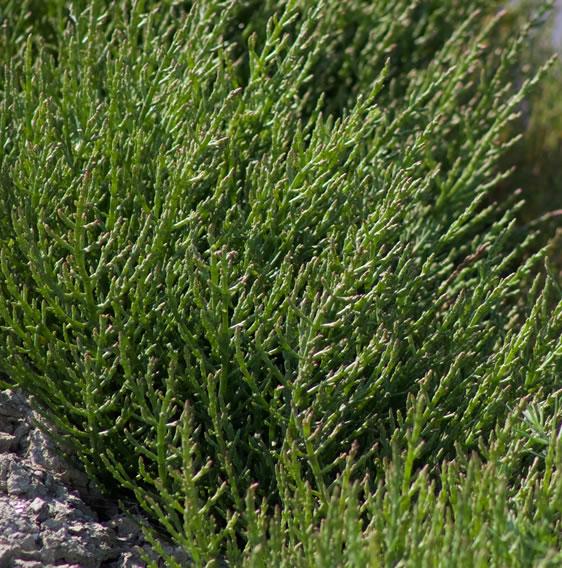
Sorrel
The name sorrel is used to describe several related plants, including wild sorrel and French sorrel. Its name derives from the French for ‘sour’, in reference to the plant’s characteristic acidity. The leaves of the sorrel plant are the part used in cookery. Sorrel leaves are generally large, bright-green and arrow-shaped with a smooth, crisp texture.
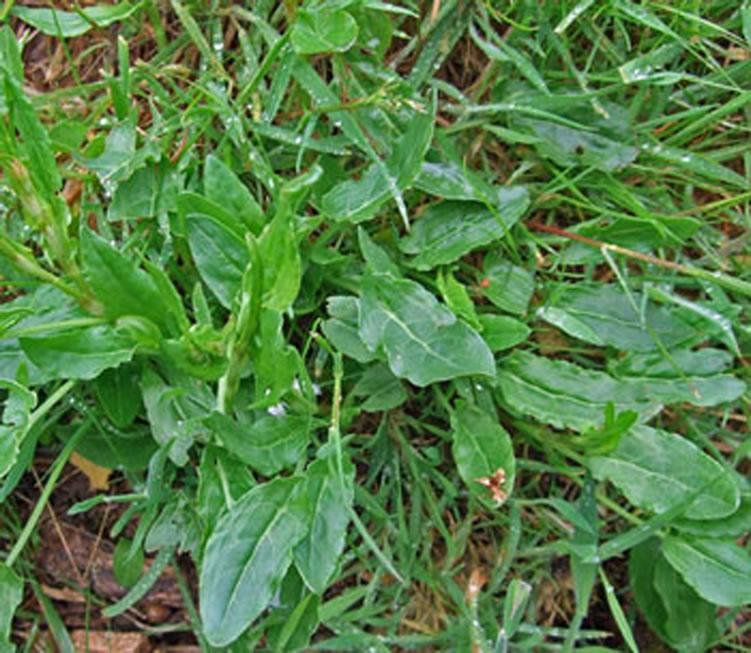
Spinach
The distinctive, slightly bitter/metallic flavour of spinach makes it something of a ‘love it or hate it’ food. Spinach is available year-round, but the freshest, but most tender spinach is most easily obtainable in the spring. It is thought that spinach was first cultivated in southwest Asia. Trade routes through the Middle East took it to North Africa, from where it was introduced to Europe by the Moors by the twelfth century.

Wet Garlic
The first garlic crop of the season, known as ‘wet garlic’ because it has not been hung up to dry, is in stock now. The huge juicy cloves give wet garlic a particularly creamy flavour, and the texture is quite different from that of dried garlic. The internal skins have not formed so the whole head can be chopped and used as a seasoning. The heads can also be roasted whole and the creamy cooked garlic is delicious spread on toast or mixed with butter and used on vegetables or in baked potatoes. The flavour is strong, but smooth and not at all bitter. While the stalks are fresh and green they can be cooked like leeks or finely sliced and used to make soup, omelettes or garnish salads.
